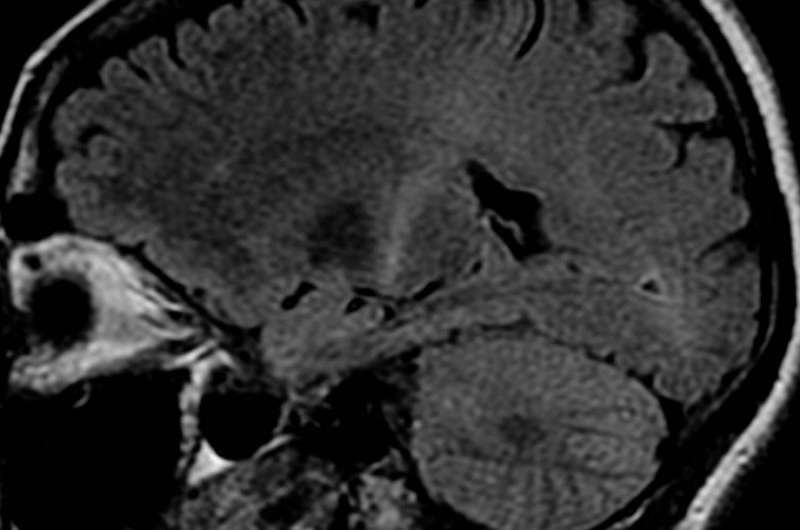This article has been reviewed according to Science X's editorial process and policies. Editors have highlighted the following attributes while ensuring the content's credibility:
fact-checked
peer-reviewed publication
trusted source
proofread
A new immune pathway sheds light on amyotrophic lateral sclerosis

While drugs are on the market to slow the progression of neurodegenerative diseases, there are still no cures. But researchers at Boston Children's Hospital and Harvard Medical School are looking for new pathways for slowing neuronal dysfunction and treating amyotrophic lateral sclerosis (ALS), a fatal motor neuron disease. The team found that proteins involved in the innate immune system could be at the root of the disease.
"The unmet need for therapies for neurodegenerative diseases is huge, and our work opens up a whole new pathology that we could address," says Judy Lieberman, MD, Ph.D., a researcher in the program in cellular and molecular medicine at Boston Children's and a co-principal investigator on the project.
"We revealed an innate immune molecule playing a role in neurodegeneration, which opens up a new avenue for thinking about neuronal health," says Isaac Chiu, Ph.D., associate professor in immunology at Harvard Medical School and a co-principal investigator on the project.
The researchers found that inactivating a molecule in the brain linked with inflammation prevents cellular damage in human neurons and delays the progression of ALS in mice. The findings will be published in Neuron on March 13, 2023.
The role of inflammatory proteins in the brain
When cells recognize danger, like an infection, immune molecules are activated to sound an alarm that recruits and activates immune cells to the site of damage to try to eliminate it and orchestrate tissue repair. Sometimes, the immune response involves a family of proteins called gasdermins, which trigger cells to die through a highly inflammatory process called pyroptosis. One type of gasdermin, gasdermin E, is expressed in the brain most highly in nerve cells. But no one knew what it's doing.
The research team, led by Dr. Lieberman and Chiu, first examined how gasdermin E affects neurons. The team developed models of neurons from mice and from human samples and looked at the effects of gasdermin E on axons, or the parts of neurons that send electrical signals. The researchers found that when neurons detect a hazard, gasdermin E drives damage to the powerhouse of the cell, known as mitochondria, and the axons. The axons degenerate, but the cells don't die.
"If you look at a plate of neurons, you see a jungle of axons. But if you look at a plate where gasdermin E is activated, you see retractions of these cellular processes," explains Himanish Basu, a postdoctoral researcher in Chiu's lab at Harvard University who led this study. This retraction happens in nerves in the muscles of patients with ALS, a progressive disease characterized by muscle twitching and weakness, but eventually progressing to muscle atrophy and paralysis.
"Our study is an example of how immunology can help explain neurodegeneration on a mechanistic level, and what drives axon loss and neuronal injury," says Dylan Neel, an MD/Ph.D. student in Chiu's lab who co-led this study.
Gasdermin E in ALS
To better understand the relationship between gasdermin E and neurodegeneration, the team created models of ALS motor neurons by transforming stem cell samples of ALS patients into neurons. The researchers found that gasdermin E is present at high levels in these neurons. And they could protect axons and mitochondria from damage by silencing gasdermin E.
The team then wanted to test whether the effects they saw in cells could translate to improvements in symptoms related to neurodegeneration. The researchers silenced gasdermin E in a mouse model of ALS. They found that it delayed the progression of symptoms and led to protected motor neurons, longer axons, and less overall inflammation. These findings suggest that gasdermin E drives changes to neurons that may contribute to disease progression. "Inflammation is a double-edged sword, and could be very destructive based on context," says Chiu.
Though some drugs can block the effects of other gasdermins, it is still unclear whether gasdermin E can be targeted with drugs. But this work is an important first step towards developing new approaches for treating ALS. "We describe a pathway and molecules that you can target for treating many neurodegenerative diseases," says Dr. Lieberman.
More information: Isaac M Chiu, Gasdermin-E mediates mitochondrial damage in axons and neurodegeneration, Neuron (2023). DOI: 10.1016/j.neuron.2023.02.019. www.cell.com/neuron/fulltext/S0896-6273(23)00123-X



















